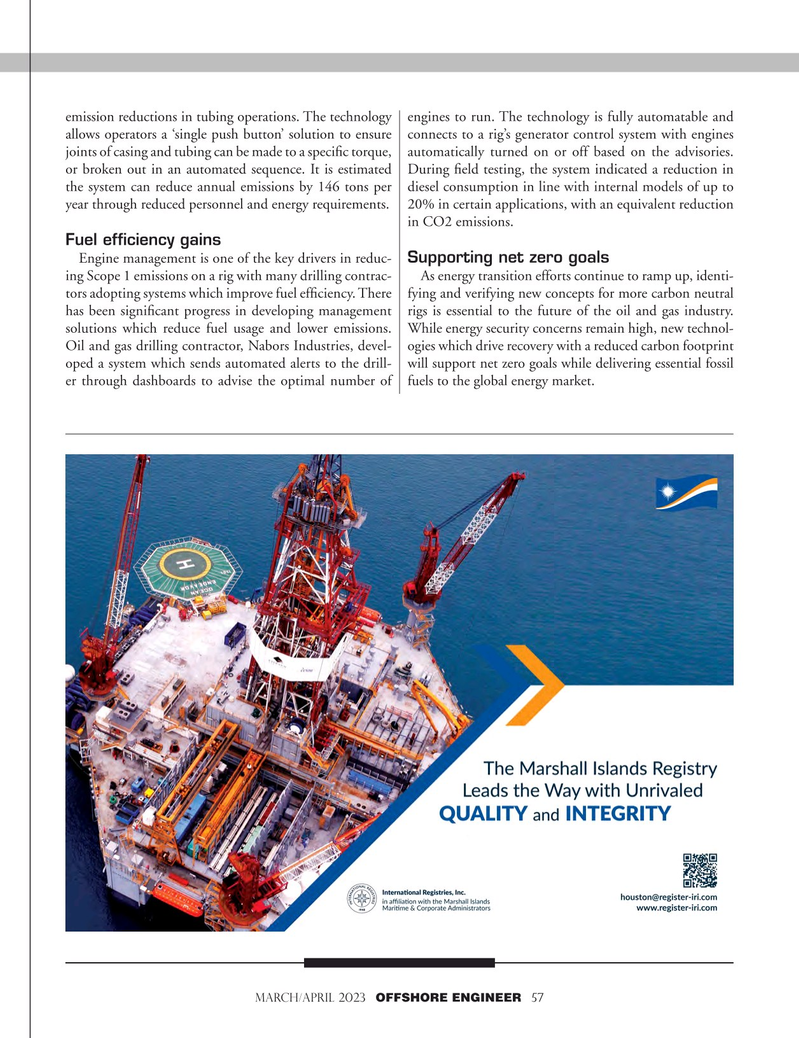
Page 57: of Offshore Engineer Magazine (Mar/Apr 2023)
Read this page in Pdf, Flash or Html5 edition of Mar/Apr 2023 Offshore Engineer Magazine
emission reductions in tubing operations. The technology engines to run. The technology is fully automatable and allows operators a ‘single push button’ solution to ensure connects to a rig’s generator control system with engines joints of casing and tubing can be made to a specifc torque, automatically turned on or off based on the advisories. or broken out in an automated sequence. It is estimated During feld testing, the system indicated a reduction in the system can reduce annual emissions by 146 tons per diesel consumption in line with internal models of up to year through reduced personnel and energy requirements. 20% in certain applications, with an equivalent reduction in CO2 emissions.
Fuel efficiency gains
Supporting net zero goals
Engine management is one of the key drivers in reduc- ing Scope 1 emissions on a rig with many drilling contrac- As energy transition efforts continue to ramp up, identi- tors adopting systems which improve fuel effciency. There fying and verifying new concepts for more carbon neutral has been signifcant progress in developing management rigs is essential to the future of the oil and gas industry. solutions which reduce fuel usage and lower emissions. While energy security concerns remain high, new technol-
Oil and gas drilling contractor, Nabors Industries, devel- ogies which drive recovery with a reduced carbon footprint oped a system which sends automated alerts to the drill- will support net zero goals while delivering essential fossil er through dashboards to advise the optimal number of fuels to the global energy market.
MARCH/APRIL 2023 OFFSHORE ENGINEER 57

 56
56

 58
58